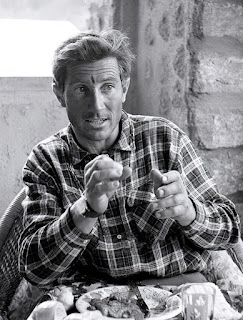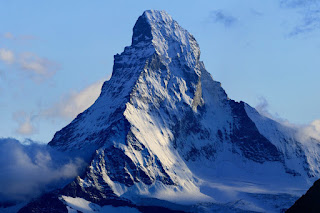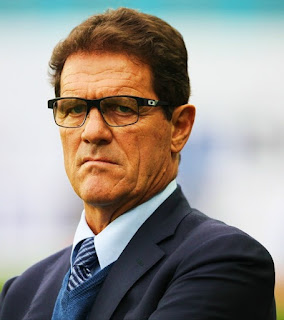Actress hailed for talent and beauty died tragically young
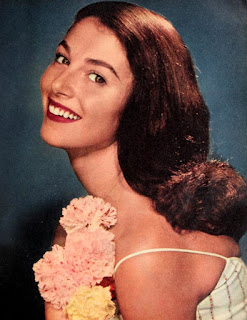 |
Anna Maria Pierangeli, the actress who
became known as Pier Angeli |
The actress Pier Angeli, a Hollywood star in the 1950s and 60s, was born on this day in 1932 in Cagliari, Sardinia.
She won awards in Italy and in America at the start of her career, when she was likened by some critics to the Swedish-born star Greta Garbo.
Described by the actor Paul Newman as "the most beautiful Italian actress of the century", Angeli was also a fixture in the gossip columns. Linked romantically with a number of Hollywood's leading male actors, she dated
Kirk Douglas and became close to the celebrated 'rebel'
James Dean before marrying another star, the Italian-American actor and singer, Vic Damone.
It would be the first of two marriages. She had a son, Perry, with Damone but they divorced after four years. A second marriage, to the Italian composer, Armando Trovaioli, produced another son, Andrew, but they also divorced.
Born Anna Maria Pierangeli, the daughter of an architect, she had a twin sister, Maria Luisa, who would also become an actress. Her mother, Enrica, used to dress the girls to resemble the American child star, Shirley Temple. The family moved to Rome when she was three.
Her mother wasted little time in enrolling the girls for stage school as soon as they were old enough and Anna Maria was only 16 when she enjoyed the big break that would shape her career. Hanging out on the fashionable Via Veneto, she was spotted by the Italian actor, Vittorio de Sica, and recommended for a role in his upcoming film,
Domani e Troppo Tardi (Tomorrow is Too Late).
Playing the part of Marisa in a tale of two star-crossed adolescent lovers, she won the
Best Actress award from the Italian National Syndicate of Film Journalists. Soon, Hollywood beckoned.
Again, she was a hit from the start, winning a
Golden Globe for Most Promising Female Newcomer for her MGM debut movie Teresa, in which she played the title role and which saw Rod Steiger and John Ericson also make their debuts. Renamed Pier Angeli by the MGM producer Arthur Loew, it was her performance in this film - much of it shot on location in Rome - that brought comparisons with Greta Garbo.
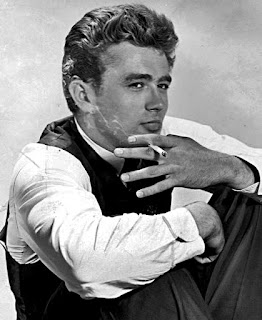 |
James Dean, the American actor with whom
Pier Angeli had a relationship |
As offers of parts began to flow, so the gossip columnists began to follow Pier Angeli's every move. She was linked with numerous actors, including Marlon Brando, before settling into a year-long relationship with Kirk Douglas after they met while filming
The Story of Three Loves.
Douglas was more than 15 years older than Angeli, however, and though they become engaged they eventually broke up, despite a number of attempted reconciliations.
Angeli met James Dean while making
The Silver Chalice, in which
Paul Newman made his screen debut. Newman was visited on set by Dean, another young American who was simultaneously filming his debut movie, East of Eden. The pretty young Italian actress caught his eye and they hit it off immediately.
By now, Angeli's family had moved to California and though she and Dean became inseparable, her mother disapproved of the relationship, preferring the charming Damone, whom Angeli has dated before and had the advantage - in her mother's eyes - of being a Catholic from a New York Italian family.
It is said that Angeli would have married Dean had he proposed, but he was reluctant to commit. He was still inclined to act on impulses. When he announced, suddenly, that he was going to New York and did not return for two weeks, her mother persuaded Pier that he was unreliable and she terminated their relationship. Soon afterwards, she accepted a proposal from Damone.
In the best melodramatic tradition of screen romances, Dean is said to have sat outside on his motorcycle while the wedding was taking place in a church in
Beverley Hills, speeding away noisily as the couple emerged. Later, after the failure of her second marriage, Angeli confessed that Dean, who would be killed in a road accident a year later, had been the true love of her life.
With painful irony, Angeli would win plaudits in 1956 for
Somebody Up There Likes Me, playing the wife of Paul Newman, who took the role of the prize fighter Rocky Graziano that had originally been earmarked for Dean.
Her career at the top was not over. In 1960 she was nominated for a
BAFTA as best foreign actress for her performance alongside Richard Attenborough in the British film
The Angry Silence and starred with Stewart Granger in the Biblical epic
Sodom and Gomorrah.
Pier Angeli died in 1971 in tragic circumstances at the age of just 39, in an apartment belonging to her former acting coach in Beverley Hills. She had been receiving treatment for a stomach disorder but her death was from an overdose of barbiturates.
Travel tip:
Sardinia's fascinating capital,
Cagliari, combines fragments of the past – spanning Carthaginian, Roman, Byzantine, Spanish and Italian eras – with 21st-century cosmopolitanism. Visitors should concentrate first on the
Castello district, the medieval heart of the city built on top of a hill with a view of the Gulf of Cagliari. Built from local white limestone, most of the city walls remain intact and include two towers that survive from the early 14th century.
 |
| The Westin Excelsior Hotel on Rome's Via Veneto |
Travel tip:
Rome's Via Vittorio Veneto, commonly known as the
Via Veneto, is one of the capital's most famous, elegant and expensive streets. The street is named after the 1918 Battle of Vittorio Veneto, a decisive Italian victory of World War I, and immortalised by
Federico Fellini's 1960 film
La Dolce Vita, which celebrated its heyday in the '50s and '60s when its bars and restaurants attracted Hollywood stars and jet set personalities. Some of Rome's most renowned cafés and five star hotels, such as Café de Paris, Harry's Bar, the Regina Hotel Baglioni and the Westin Excelsior are located in Via Veneto.
More reading:
Roberto Rossellini - pioneer of neo-realism
Federico Fellini - great 20th century filmmaker
Rudolph Valentino - tragic star of silent movies
(Photo of Via Veneto by Gobbler CC BY-SA 3.0)
Home


